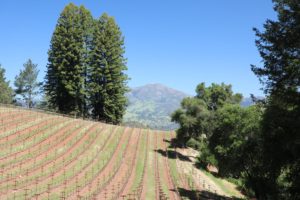
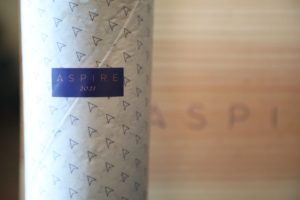
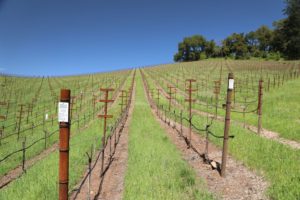 Aspire Wine (not to be confused with The Spire Collection, also in Calistoga) was founded by Phil & Beth Rielly; this 230 acre ranch is perched on the divide between Napa and Sonoma County, with the county line running through their property and roughly dividing their land 50% in each county. The Napa Valley side of the ranch is in the Calistoga sub appellation and the Sonoma side is in the Knights Valley sub appellation. The lower end of the property was first planted to grapevines in 1974; at the time of their purchase some of the older vines were still growing including Chardonnay and Cabernet Sauvignon; some of these vines were still planted on non resistant to phylloxera rootstock. The property has been fully replanted including in the same trellising footprint of the previous vineyard. Its elevation ranges from about 850 to 1,300 feet. Their closest Napa winery neighbors are Theorem Vineyards and The Vineyardist.
Aspire Wine (not to be confused with The Spire Collection, also in Calistoga) was founded by Phil & Beth Rielly; this 230 acre ranch is perched on the divide between Napa and Sonoma County, with the county line running through their property and roughly dividing their land 50% in each county. The Napa Valley side of the ranch is in the Calistoga sub appellation and the Sonoma side is in the Knights Valley sub appellation. The lower end of the property was first planted to grapevines in 1974; at the time of their purchase some of the older vines were still growing including Chardonnay and Cabernet Sauvignon; some of these vines were still planted on non resistant to phylloxera rootstock. The property has been fully replanted including in the same trellising footprint of the previous vineyard. Its elevation ranges from about 850 to 1,300 feet. Their closest Napa winery neighbors are Theorem Vineyards and The Vineyardist.
The Rielly’s purchased the property in 2016 from the previous owners, the Hayes family and in 2017 began to replant starting with the Napa Valley side of their property. The property was previously known as Bella Vista; today it is called the Rielly Ranch. Approximately 40 acres of vines are planted on the ranch, primarily to Cabernet Sauvignon but with small blocks of Cabernet Franc, Malbec and Sauvignon Blanc. The property is stunning, offering panoramic vistas across both Sonoma County and Napa Valley including the hills of the Mayacamas mountains and to the north, Mt. St. Helena. The ranch includes four soil types and a diversity of micro-climates. Even during some of the hottest days in the summer and fall, due to the Chalk Hill Gap leading to the Pacific Ocean, and their elevated perch, the property is often the recipient of cooling afternoon breezes.
A diversity of wildlife live on or roam through the property including mountain lions, bobcat, foxes and deer. In conjunction with the Audubon society several game cameras are located on part of the property. And a sophisticated water capture system is in place; any run off from within the vineyards anywhere on their property is collected and then pumped into the old reservoir (Frog Lake).
—
The ranch was purchased in the mid 1930s by Dr. John D. Humber; Dr. Humber was born in 1895 in Greenville, North Carolina. His birthplace home is now known as the Robert Lee Humber House, named in homage to his brother, Robert a state legislator, a well-known international lawyer, founder of the North Carolina Museum of Art and supporter of Pitt Community College; the Robert Lee Humber Building on campus is named in his honor. Prior to Dr. Humber’s ownership, part of the ranch was owned by Chris and Rosa Lobel Jessen. Dr. Humber named his land Rancho Juan-Inez with a short road of the same name leading to the property. Dr. Humber practiced medicine in both San Francisco and for locals in Calistoga and residents of the Porter Creek District (Sonoma County) for more than 60 years. He split his time between this ranch and his apartment in San Francisco.
Dr. Humber and his first wife founded the Royal Order of Caritas, a charitable organization that raised money and dispersed money to various organizations around the country including medical and educational needs. He and his second wife Roberta (Bobbie, one of his former medical assistants) were world travelers but were also very active in the local community including supporting local charities. She was also very active with the Royal Order of Caritas and served as its secretary. The Lee Beebee memorial account, was named in homage to her son who loved reading, but who died in a hunting accident in Knights Valley. This was often used to fund the purchase of books for local libraries. And she and Dr. Humber regularly used the ranch to host fundraising events.
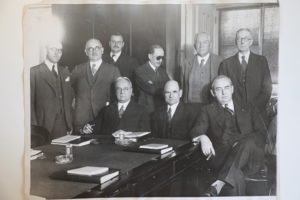
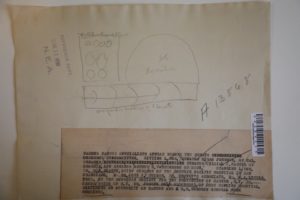
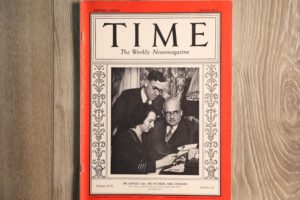 Starting in 1940 and lasting into the 1950s, this ranch was the site of the annual Amaranth Roundup (an affiliated Masonic order), a ticketed full-day event open to the general public featuring food, dancing, games, races, movies, colored films documenting the Humber’s travels around the world and other live and wholesome entertainment. Articles in the local newspapers mentioned that these events drew approximately 600 people with some of the activities being hosted in the recreation hall. The Weekly Calistogian dated Friday May 9, 1941 describes the preparation for the event, “For the past ten days, the ranch has been a bee-hive of activity, with tables being placed under the trees, barbecue pits cleaned and the huge recreation all getting a new stage readied for the presentation of the drama”. Guests that year came from as far away as San Diego and Oregon.
Starting in 1940 and lasting into the 1950s, this ranch was the site of the annual Amaranth Roundup (an affiliated Masonic order), a ticketed full-day event open to the general public featuring food, dancing, games, races, movies, colored films documenting the Humber’s travels around the world and other live and wholesome entertainment. Articles in the local newspapers mentioned that these events drew approximately 600 people with some of the activities being hosted in the recreation hall. The Weekly Calistogian dated Friday May 9, 1941 describes the preparation for the event, “For the past ten days, the ranch has been a bee-hive of activity, with tables being placed under the trees, barbecue pits cleaned and the huge recreation all getting a new stage readied for the presentation of the drama”. Guests that year came from as far away as San Diego and Oregon.
Dr. Humber moved to San Francisco in 1920 and began practicing medicine at what was Saint Francis Memorial Hospital. He took a sabbatical from medicine for one year and taught anatomy at Tulane University before returning to San Francisco where he became superintendent and assistant chief surgeon at Southern Pacific Railroad Hospital in 1927. Early in his career, he co-wrote a book on Angina Pectoris and conducted medical research on heart disease and cancer. In 1930 it was announced that along with Dr. Bernard Coffey, the two men had co-developed a ‘cancer killing serum’ using fluid from the outer layer of adrenal glands in sheep which had proven itself successful in killing cancerous tissue; it was later referred to as the Coffey-Humber treatment. Their research eventually led to the discovery of cortisone. Dr. Humber’s photograph was on the cover of the May 25, 1931 issue of Time Magazine. For his work, in 1973 he received the annual distinguished alumni award in medicine from his alma mater Wake Forest University. He retired from medicine in 1985 at age 90; he and Bobbie lived on the ranch until 1988.
Interview, Dr. John Humber, East Carolina University Digital Collections
The property was vacated when the Rielly’s purchased it in 2016. The next year, half the property was burned during the Tubbs Fire including destroying some of their newly planted vineyards. Fortunately Cal Fire helped save both the house the barn. This was not the first time a major fire burned through this part of Napa and Sonoma Counties. In 1939 the ranch was seriously threatened by a fire burning on the Sonoma/Napa County line. In 1964, a similar footprint as occurred during the Tubbs Fire, the Hanley Fire burned from Calistoga to Santa Rosa, in the process burning through this property and significantly impacting the ranch vegetation and destroying all buildings except the main house. Dr. Humber and his wife were forced to evacuate while several firefighting teams were stationed on the property including from Fremont and Alpine County.
And in 2020 the Rielly’s were planning on producing and bottling their first vintage of Aspire, but nature altered their plans. The resulting smoke from the Glass Fire caused smoke taint and no wines were made that year. As a result, their inaugural vintage was in 2019. They continue to also sell grapes to a limited number of premium producers.
Phil has enjoyed a long career in the pharmaceutical space including as co-founder in 2004 of specialty pharmacy BioRx LLC., (based in Cincinnati) and later as co-founder of North Carolina based, AvevoRx a national specialty infusion pharmacy company. Beth formerly taught at Xavier University. She and Phil started a foundation in Cincinnati called OptimALL, helping provide tools to succeed in the classroom to students with learning difficulties.
While at the Yellowstone Club, a private residential club, ski resort, and golf resort in Montana, Phil randomly met vintner Dave Phinney (Orin Swift, The Prisoner). Phinney was pouring wines from one of his brands he owned at the time, The Crane Assembly. Both men began talking and Phinney mentioned he used to purchase grapes from their ranch for use in The Prisoner, The Cuttings brand. He also recommended Phil and Dave use Wight Vineyard Management overseen by Erik Wight. After Phinney sold The Prisoner to Augustin Hunneus, Hunneus continued to purchase grapes from their property. Other wineries that have purchased grapes from the property include Constellation, Far Niente, Faust, Mumm and Sinegal Estate.
Prior to starting Aspire, during a gathering of wine enthusiasts at their home, each of the attending guests brought bottles of wine. Phil and Beth kept gravitating towards the wines made by Hayley Wight, the winemaker for Lewelling Vineyard and Hayfork Vineyard. They still had the opened bottles the next day and tasted them blind. Again they were pulled towards the Cabernet Sauvignon she had produced. They asked her to make a barrel of wine in 2018; she has made all the subsequent vintages.
Select Wines
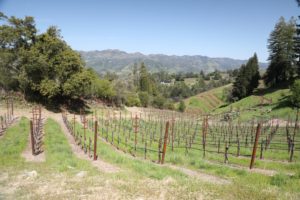
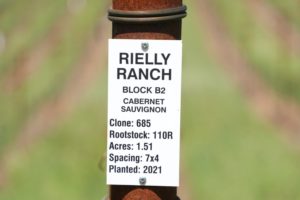
 The 2021 Aspire Cabernet Sauvignon (100% varietal) is deep ruby and opaque; less forward and less ripe than the 2019, the bouquet is more savory and darker with aromas of plum, dark cherry, blackberry and boysenberry and mulberry. As the bouquet opens it reveals some darker barrel influenced notes including of dark chocolate and a tobacco spice. On the palate there are flavors of blackberry pie, boysenberry jam, dark plum and dark cherry, finishing with dark chocolate, cocoa powder and mocha. Shows a little more texture than the 2019 – not to mention it is two years younger. The tumbled tannins are lightly gravelly and linger for some in parallel with the fruit on the finish. And there is a lasting note of dried tobacco spice. If we were to assign a descriptor to this wine, it would be crowd friendly. This is one of the more approachable mountain red wines from Napa Valley we have tried from this vintage. Like in the 2019 vintage, the 2021 bottling also included grapes from a number of the older blocks planted in 1974 as well as newer plantings. This wine was aged for 20 months in 90% new French oak barrels.
The 2021 Aspire Cabernet Sauvignon (100% varietal) is deep ruby and opaque; less forward and less ripe than the 2019, the bouquet is more savory and darker with aromas of plum, dark cherry, blackberry and boysenberry and mulberry. As the bouquet opens it reveals some darker barrel influenced notes including of dark chocolate and a tobacco spice. On the palate there are flavors of blackberry pie, boysenberry jam, dark plum and dark cherry, finishing with dark chocolate, cocoa powder and mocha. Shows a little more texture than the 2019 – not to mention it is two years younger. The tumbled tannins are lightly gravelly and linger for some in parallel with the fruit on the finish. And there is a lasting note of dried tobacco spice. If we were to assign a descriptor to this wine, it would be crowd friendly. This is one of the more approachable mountain red wines from Napa Valley we have tried from this vintage. Like in the 2019 vintage, the 2021 bottling also included grapes from a number of the older blocks planted in 1974 as well as newer plantings. This wine was aged for 20 months in 90% new French oak barrels.
The 2019 Aspire Cabernet Sauvignon (100% varietal); this wine is deep ruby and dark in color. The bouquet is fully ripe, forward, highly expressive and deeply layered. Its fruit core is of dark plum, cherry, blackberry, boysenberry and mulberry with notes of dark chocolate, mocha and cocoa powder and as the wine evolves a note of soy sauce and darker baking spices. It is plush from its entry through the finish. The palate to some extent mirrors the bouquet and includes flavors of ripe cherry, boysenberry jam, blackberry and Pakistani mulberry. And as it opens, it offers notes of mocha, dark cocoa and tobacco. Its texture is gentle with fully ripe, rounded and resolved tannins. The finish lingers with a note of espresso, cinnamon and a light hint of dried tobacco leaf. The texture here lingers seamlessly like a perfectly fitting piece of a puzzle. This wine was aged for 20 months in 90% new French oak barrels.
—
Determining a name for the wine brand was one of the more difficult parts of the project; they initially identified about six names but due to already being trademarked, none could be used. Phil met Tim Martin of Gauge Branding; both Phil and Beth described their backgrounds and interests to Gauge including Phil’s entrepreneurial spirit and Beth’s work with special education children. Finally Gauge Branding requested that Hayley join in on one of their brainstorming sessions. She began speaking about the potential of the property, the replants that were being done and the need to experiment. The word ‘aspire’ was mentioned – meaning, to rise or to achieve something. Remarkably this word was not trademarked for a wine brand.
And the inspirational label features an image of a person looking west over the Mayacamas mountains; the glistening waters of Frog Lake far below while bathed in the golden rays of the setting sun.
Aspire Wines is a member of the the Calistoga Winegrowers Association and Napa Valley Grape Growers. Their wines are poured at several annual tastings hosted by the Calistoga Wine Growers Association. For more information, to schedule a visit and tasting or to purchase wine, visit: www.aspirewine.com

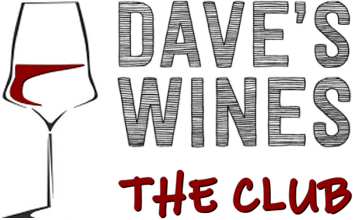




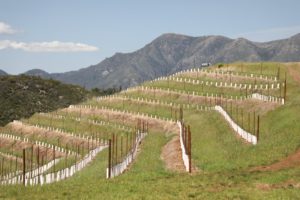
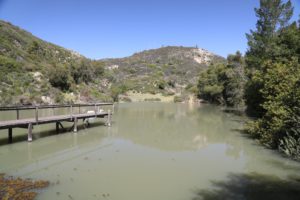
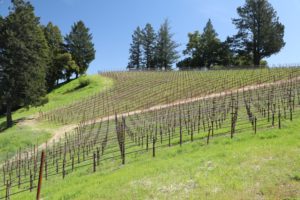

Leave a Reply